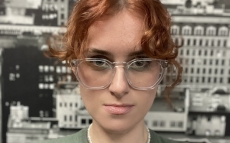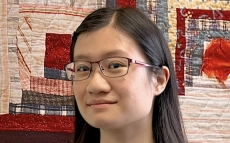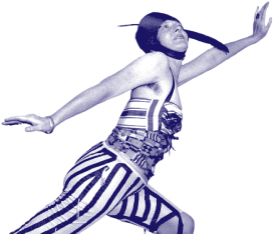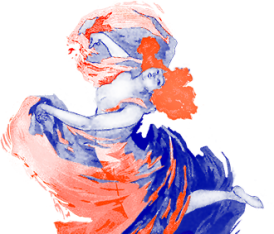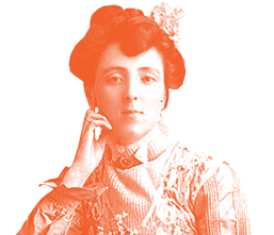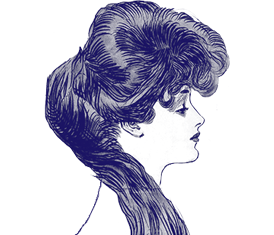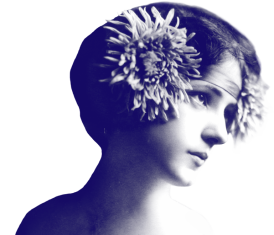HomeNews & Events2015December Dada Fantasia: Elsa von...
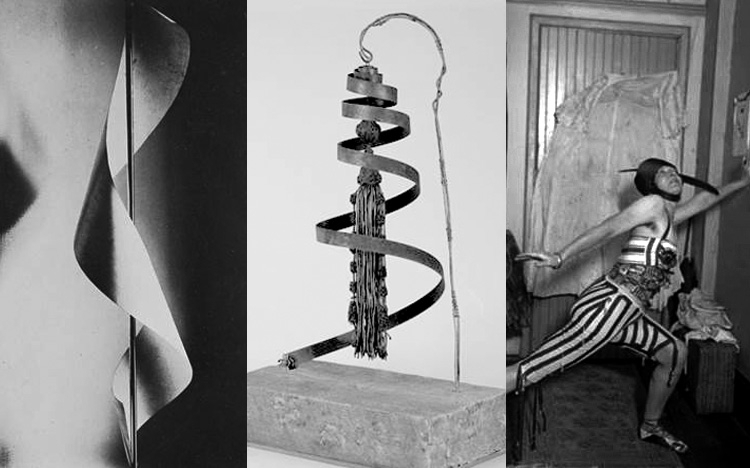
Gammel, Irene. “Dada Fantasia: Elsa von Freytag-Loringhoven in New York.” Die Dada: Wie Frauen Dada prägten. Ed. Ina Boesch. Zurich: Verlag Scheidegger & Spiess, March 2015. 98-106.
 Excerpt
Excerpt
Whereas Marcel Duchamp hung his readymade In Advance of the Broken Arm (1915) in his room as an ornament, an extension of sorts to his body, Elsa von Freytag-Loringhoven adorned herself with her art objects. These objects were consistently fashioned out of quotidian objects, and by wearing them, the Baroness performed her Dada art for the everyday public. A case in point is her work Limbswish (1917-19) a fiercely multimodal work in which the poetic intersects with the visual and the corporeal. We can see resonances of Limbswish in Man Ray’s Lampshade (1919), which engages the quotidian and the concept of movement with a shade sculpture spiraling from a metal stand. However, the Baroness’s remarkable conception of her body sculpture made the spiral both corporeal and performative. This use of the body was provocative and daring, as it was inspirational and influential, its trajectory discernable in Duchamp’s queering gestures and in his own transposition of art into the corporeal.
Während Marcel Duchamp sein Readymade Dem gebrochenen Arm voraus (1915) als Dekoration in seinem Zimmer aufhängte, als eine Art Verlängerung seines Körpers, schmückte Elsa von Freytag-Loringhoven sich selbst mit ihren Kunstwerken. Diese Objekte waren grundsätzlich aus alltäglichen Gegenständen hergestellt, und indem sie sie zur Schau trug, brachte die Baronesse Dada-Kunst ins öffentliche Leben. Ein Paradebeispiel ist ihre Arbeit Limbswish (1917–1919) – ein poetisches, virtuos multimodales Werk, in dem visuelle und körperbezogene Aspekte zusammenspielen. In Man Rays Lampshade (1919) kann man Anklänge an Limbswish entdecken, wobei letztere Arbeit wie eine Schattenskulptur spiralförmig an einem Metallständer hängt und sich mit den Konzepten Alltäglichkeit und Bewegung auseinandersetzt. Doch die eindrucksvolle Konzeption der Skulptur lässt die Spirale sowohl körperlich als auch performativ erscheinen. Diese Verwendung des eigenen Körpers war ebenso provokativ und gewagt wie inspirierend und einflussreich. Verbindungen zu Duchamps Verfremdungen und seinen Übertragungen von Kunst ins Körperliche sind klar ersichtlich.
Editor Ina Boesch about the essay and the book:
“Im Essay Dada Fantasia wird sehr schön gezeigt, wie Elsa von Freytag-Loringhoven in vielen Gebieten eine Pionierin war. In den Essays (auch in denjenigen von Walburga Krupp über Taeuber-Arp, Ralf Burmeister über Hannah Höch, Sabine Kriebel über Angelika Hoerle und Ruth Hemus über Céline Arnauld) geht es um den Einfluss der porträtierten Frauen auf ihre Kollegen. Walburga Krupp zeigt beispielsweise, wie die Puderdose von Taeuber-Arp Hans Arps Werk Relief Dada beeinflusst hat.”
Read more about the book
http://www.scheidegger-spiess.ch/index.php?pd=ss&lang=de&book=607&page=press
Image Credits:
Man Ray, Lampshade. Reproduced in 391 13 (July 1920).
Elsa von Freytag-Loringhoven, Limbswish. Mark Kelman Collection.



